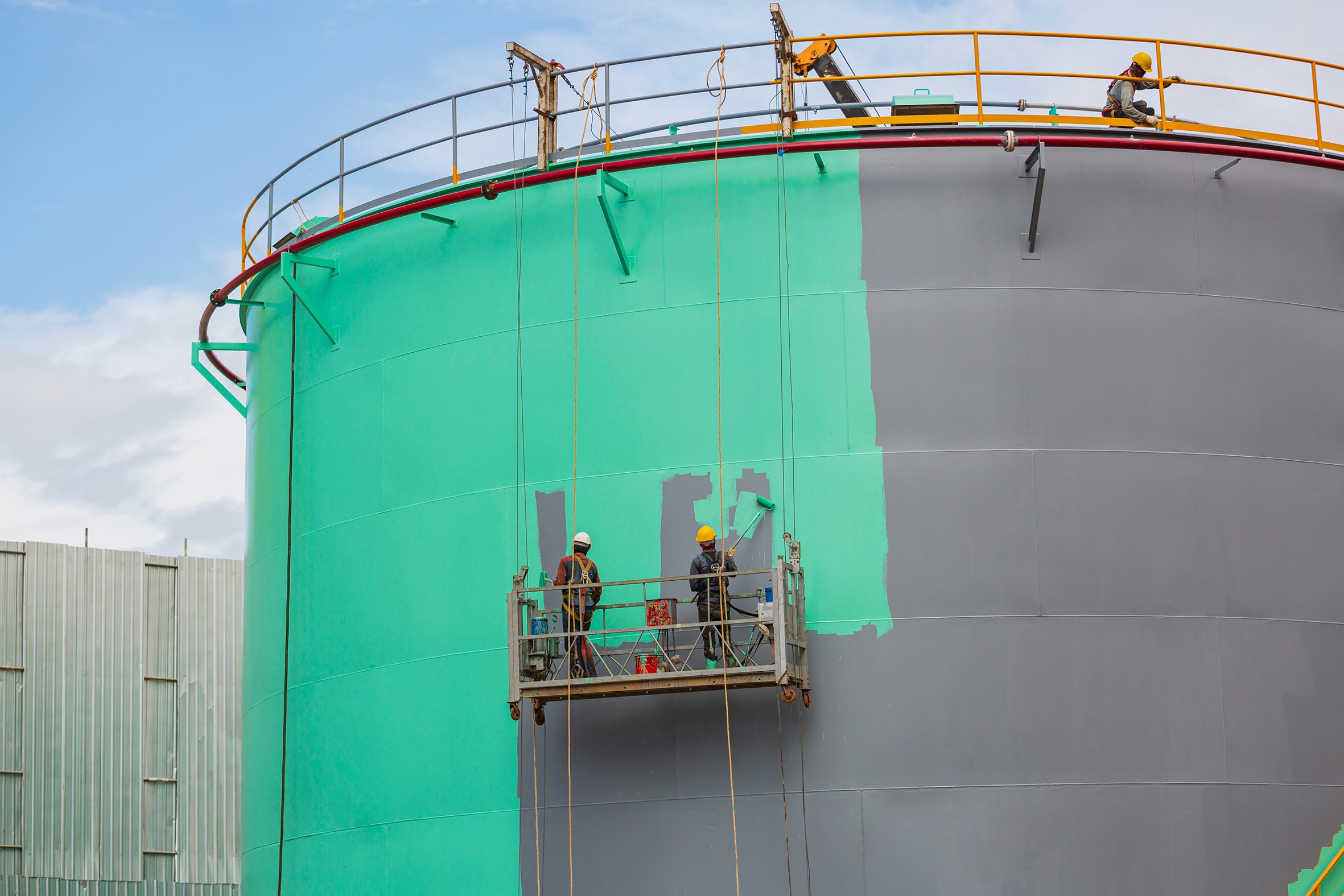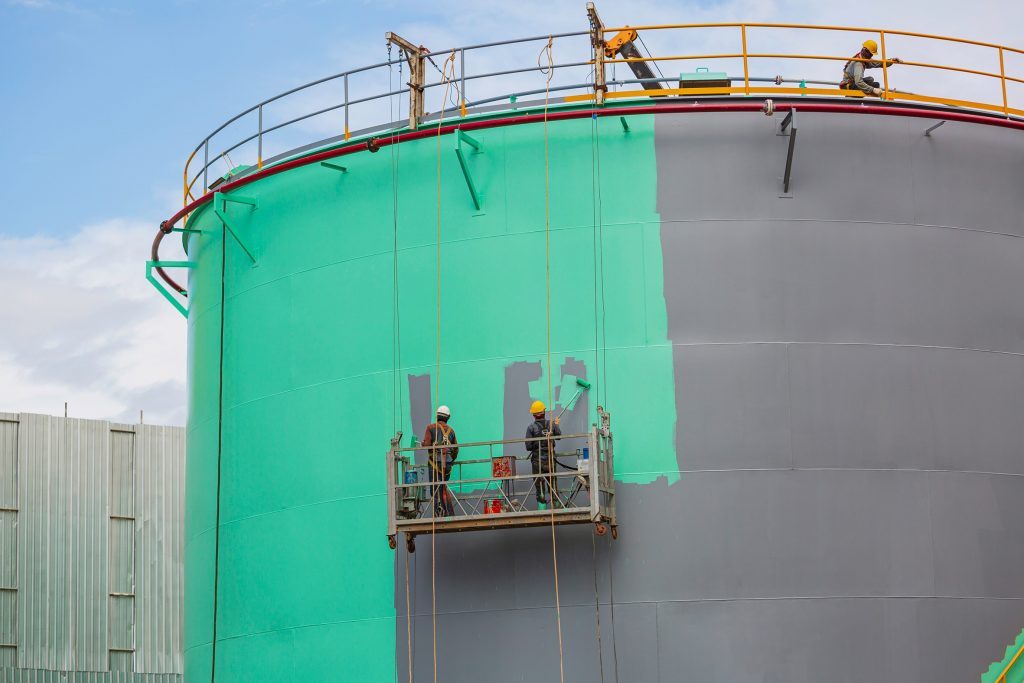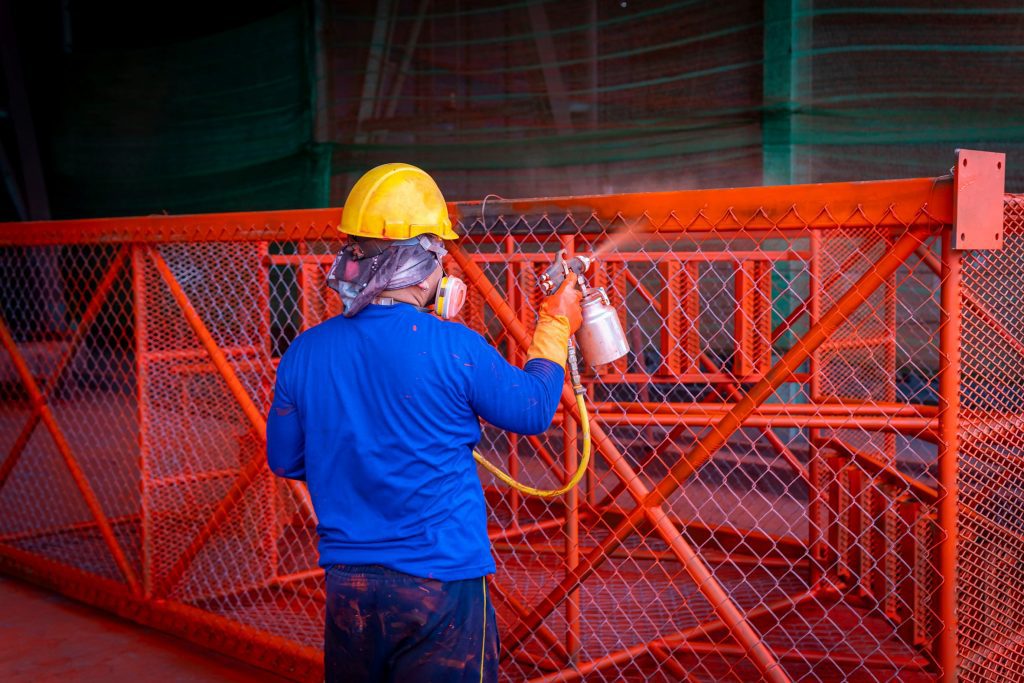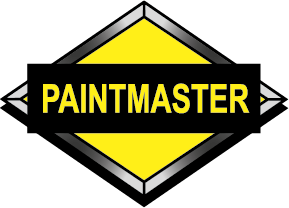
In our last few painting guides, we’ve focused a lot on domestic projects, both interior painting and exterior. In this month’s industrial painting guide we’re thinking bigger and talking about painting plant machinery and other industrial surfaces.
We’re the UK’s most trusted supplier of trade paint for a reason; we don’t just supply a few tins of emulsion paint. We’re the go-to supplier for larger jobs and have up to 205l barrels of high-quality paint to get even the biggest jobs done.
Painting an Industrial Plant
Painting a plant is not a job you can do on a quiet afternoon in work. It takes a lot of time and can eat into a maintenance budget easily too. Many plant owners understandably want to focus on keeping their plants and machinery working, but a fresh coat of paint is just as important.
Not only does painting areas of your plant make it look better; it can improve the efficiency of machinery and help keep workers safe too – more on that later.
We created a blog a while back about painting factory floors. The same principles and technique work for industrial plants too. You need a thick, hardwearing paint that will last for a long time. If you have a concrete floor, a polyurethane sealer will remove any imperfections in the surface and creates a clear, matte finish. Alternatively, alkyd sealer is better for floors that have been painted previously and creates a higher-sheen finish.
If you decide to leave the walls and floors of your plant for another year, there are still ways to improve the look of your industrial plant.

Should you Paint Industrial Machines?
Yes, and not just to make them look good. A professional paint job adds protection to the surface of your machines, increasing their lifespan.
Also, flecks of paint can get into machines and ruin their inner workings or contaminate whatever they are producing.
Our gloss machinery enamel paint is perfect for preserving any machine’s surfaces. It based on a modified alkyd resin. This resin is pigmented and dissolved in white spirit to create a hard-wearing, easily applicable solvent.
As with all of our paints, it’s available in a wide variety of colours:
- Light Grey
- Mid Grey
- Dark Grey
- Rustic Red
- Black
- White
- Mid Green
- Dark Green
- Post Office Red
- JCB Yellow
- Bright Yellow
- Light Blue
- Mid Blue
- Dark Blue
Our machinery enamel is also part of our Colour System. By entering any RAL or British Standard codes at checkout we can produce paint in any colour you can imagine.
The benefits don’t stop there. Alkyd paint protects against abrasion, corrosion, and chemical damage. Rust can ruin a machine fast, so preserving the areas where rust can form is guaranteed to keep your machines up and running.
Industrial Plant Safety
Keeping your plant and equipment freshly painted can also improve safety for workers and visitors.
If your machines are brightly coloured, this makes potential hazards easier to avoid. It will also make safety signage and instructional labels stand out more, ensuring anyone with less experience using the machines is able to learn the ins and outs easily.
When painting the floor of an industrial plant, safe zones and pathways need to be clearly marked with a different colour of paint. The area around machines should also be clearly defined, so no one gets too close without the correct safety gear and equipment.
Thirdly, if your machines have been painted, workers will be able to identify damage and spillages before it’s too late. If you use enamel paint for machinery, any stains will be easy to clean – and will accrue less dust and grime when not in use.

Plant Machinery Painting Guide
Knowing that you need to paint your machines is one thing, but doing it right is another story. Don’t worry, we’re here to help!
Follow our step-by-step guide to learn how to get the best results from every tin of paint. This is an advanced job; make sure you read through multiple times before you get started.
Here’s what you’ll need for this project:
- Paint
- Primer
- Paint Sprayer
- Brush
- Sander
- Jetwash
- Cleaning cloth
- Label Remover
- Scraper
- Filler
- Masking Tape
- Masking Paper or Plastic
- Spray Coverall
- Mask
- Gloves
STEP 1 – Prep
First, ensure that your chosen machine is in an easy to access and dry location. If it’s construction equipment, try to move it under shelter in case of rain. If the machine is inside already, make sure there is nothing nearby that will ruin drying paint. Make sure there is suitable ventilation in the area as the paint fumes will be strong.
It’s also recommended you do as much of the painting in one sitting as possible to ensure a consistent finish, but still paint section by section.
STEP 2 – Cleaning and Repairs
If the machine has been painted previously, you need to remove the previous layer completely so the new paint can cling to the surface. You should also repair any holes using filler and try to repair dents too.
The best way to remove the paint, and any rust on the surface, is using a circular sander.
Next, clean the machine as thoroughly as possible. If the surface is dusty or grimy, the paint and primer will not be able to stick to the surface, and you’ll end up with an uneven finish.
A jetwash is an ideal method for cleaning, but a cloth and some old-fashioned elbow grease will get the job done too. Use degreaser and soap, with a hose or second blast to remove any residue.
You should also remove any labels or decals from the surface. This can be done with label remover and a scraper. You can choose to try to paint around labels, but any drops of paint that splash on to them can obscure important information. Plus if they’re old and faded they’ll stand out, and not for the reason they should.
Ensure you have new labels to replace the old ones before the machine is used again.
STEP 3 – Masking
Use masking tape to cover any areas that won’t be painted, including mirrors and screens. You’ll be using a sprayer for the paint application, so cover them up completely, not just the edges.
For larger areas such as belts and tyres, using large strips of masking paper or protective plastic. You can also use some for the floor around the machine to protect it; old towels and sheets work too.
STEP 4 – Priming
Before you load your paint brush, roller, or sprayer, put on your PPE gear (coverall, mask, and gloves).
Apply an even layer of primer to the surface, overlapping strokes at the edges to blend it all together. This will help the paint cling to the machine, leading to a more even finish and longer-lasting colour.
Allow the primer to dry before moving on.
STEP 5 – Painting
Now for the fun part.
We recommend using a sprayer as it can reach areas that a paint brush and paint roller can’t. But if there aren’t these tricky areas, a paint roller and paint brush will still work well. A brush is ideal for filling in any areas you miss, or for future touch-ups when the layers are dry.
Two coats of paint will be plenty – you’ll get the brightest colour and a hardwearing finish that will look great for a long time.
STEP 6 – Admire your Work
When the final layer is dry, and you’ve removed all the tape and plastic, take a step back and admire your handiwork. How does it look?
If you have any spare paint, keep it safe somewhere for future touch-ups.
The UK’s Most Trusted Paint Supplier
Painting industrial machinery is a tough job, and you need a quality paint to get the right result.
Trust Paintmaster to guide you through the process and provide you with the best paints, primers, and painting accessories you need. We specialise in high-quality products that will help you get the results you want.
If you have any questions about any of our products or want to learn more about interior painting and exterior painting, either get in touch or check out our blog for more information.
We look forward to hearing from you.
FAQ's
How hard is industrial painting?
Industrial painting often takes much longer than domestic or commercial painting due to the large surfaces that need to be covered. It’s also necessary to time your painting well, so work/production is interrupted as little as possible.
What is considered industrial painting?
Industrial painting is about practicality more than aesthetics. Industrial areas like factories, garages, and workshops, need quality paint that is designed to last for as long as possible. It is also used for safety, meaning bold colours are often essential.
What is the toughest industrial paint?
The toughest industrial paints are polyurethane paint, alkyd, and epoxy. These are designed with durability in mind, but also come in bold colours which help with safety in industrial settings.
What's the difference between industrial paint and regular paint?
Industrial paint is all about toughness. Each coat needs to last as long as it can, so looking good is often sacrificed in favour of durability. It often comes in more larger batches to cover wide areas and surfaces.
